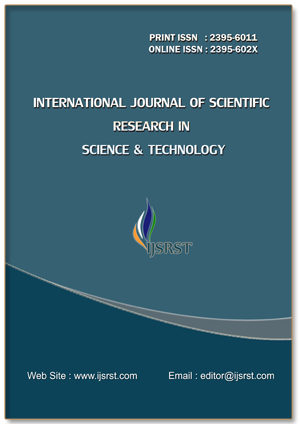Formulation of Jowar Laddu Incorporated With Banana Peel Powder and Aswagandha Powder
DOI:
https://doi.org/10.32628/IJSRST207424Keywords:
Banana peel, Jowar, Aswagandha, Utilization, LadduAbstract
The present work was done to assess the utilization of Banana Peel in product development. Banana Peel forms about 35% of the fruit and is mostly discarded as a waste since it is highly perishable fruit. Since, banana peels are reported to have nutritional benefits and contains high amount of potassium, calcium, sodium, manganese, vitamin B6 and B12. It helps against diarrhea, hypertension, etc. Therefore, its utilization for developing value added product is the need of an hour. In this study efforts were made to incorporate Banana peel powder and Aswagandha Powder in Jowar Laddu in the ratio of 10:5 and 5:10. These products- designated as T1 and T2 were evaluated by 15 members on 9-point hedonic scale based on 5 parameters- aroma, color, taste, mouth feel and overall acceptability. After sensory evaluation T1 was found to be more acceptable. These laddu are nutritious and healthy as it contains Aswagandha powder which can boost brain function reportedly and Jowar flour which is gluten free cereal which helps those with celiac disease also making it more nutritious. Thus, these laddu not only saves banana peel from going to waste but also provides rich flavors and nutrients.
References
- Tiwari A, Mishra S (2018) Nutritive Evaluation Of Wheat Bran Biscuits Incorporated With Flaxseed. International Journal of Science and Research. ISSN: 2319-7064
- Surve, V.D and Madhavareddy, R.N (2018) Studies on Traditional Indian Fermented Food: Characterization and Development of Jowar Papad. International Journal of Current Microbiology and Applied Sciences. Special Issue-6:866-882.ISSN:2319-7692
- Yadav, T and Mishra, S (2016). Organoleptic Evaluation of Value Added Gluten Free Biscuits. International Journal of Food Science and Nutrition. Vol. 1, Issue 5; ISSN: 2455-4898.
- Shahidi, F and Naczk, M (1995) Phenolics in Cereals and Legumes. In Food Phenolics, Shahidi,F ; Ed., Lancasler, Pa: Technomic Pub. Co. p; 9-52.
- Huang, M.T and Ferraro, T (1992); Phenolic Compounds in FOOD and Cancer Prevention. In Phenolic Compounds in Food and Their Effects on Health II; doi: 10.1021/bk-1992-0507.ch002.
- Chakraborty C, Mukherjee A, Banerjee B, Mkherjee S, Bandyopadhyay K (2017) Utilization Of Banana Peel And Pulp As A Functional Ingredient In Product Development: A Review. International Journal of Engineering Research & Science & Technology. Vol.6, No.1 ISSN 2319- 5991
- Anhwange, B.A., Ugye, T.J., and Nyiaatagher, T.D. (2009) Chemical Composition Of Musa Sepientum (Banana) Peels. Electronic Journal of Environmental, Agriculture and Food Chemistry, ISSN: 1579-4377
- Mishra L.C, Singh B .B, Dagenais S (2000) Scientific Basis for The Therapeutic Use of Withania Somnifera (Aswagandha): A Review. Alternative Medicine Reviews, 5(4), 334-346
- Namdev P and Gupta K.R (2015) Herbal Green Tea Formulation Using Withania Somnifera Stems, Terminalia Arjuna Barks, Cinnamom Bark and Tinospora Cordifolia Stems and Nutritional and Phytochemical Analysis. Journal of Pharmacognasy and Phytochemistry, 4(2), 282-291
- Jagannadha Rao PVK, Das M, Das S K (2007) Jaggery- A Traditional Indian Sweetener, Indian Journal of Traditional Knowledge. Vol.6 (1), Pp. 95-102
- Pattnayak PK and Mishra M K (2004) Energetic and Economics of Traditional Gur Preparation: A Case Study in Ganjan District of Orissa, India. Biomas and Bioenergy 26(1):79-88 DOI: 10.1016/S0961-9534(03)00061-8
- Kumar D, Singh J, Rai D R, Bhatia S, Singh A K and Kumar M (2013) Color Changes in Jaggery Cubes under Modified Atmosphere Packaging in Plastic Film Packages, Agrotechnol DOI: 10.4172/2168-9881.1000S1-005
Downloads
Published
Issue
Section
License
Copyright (c) IJSRST

This work is licensed under a Creative Commons Attribution 4.0 International License.

